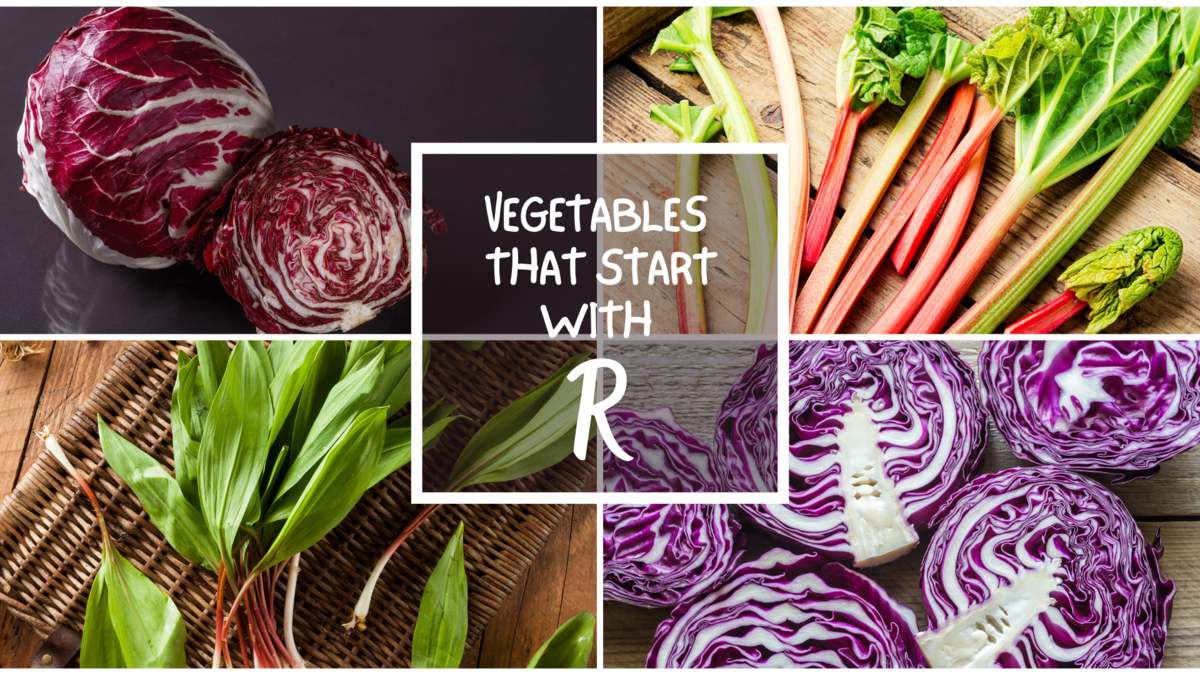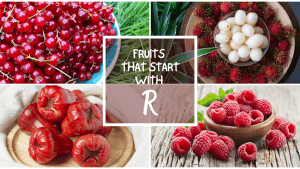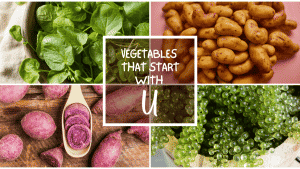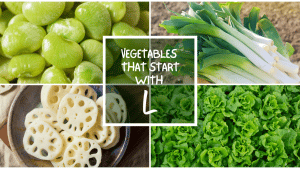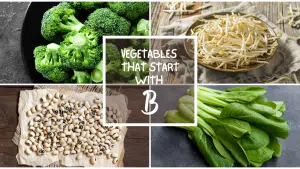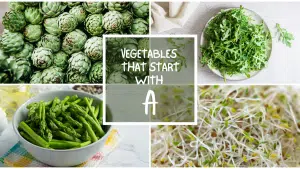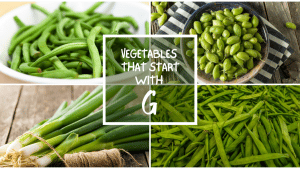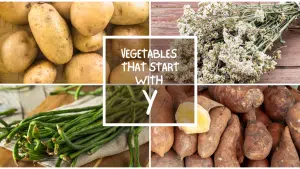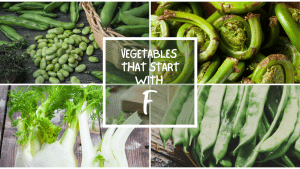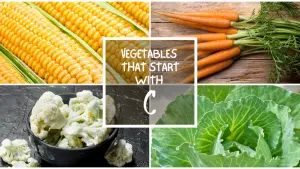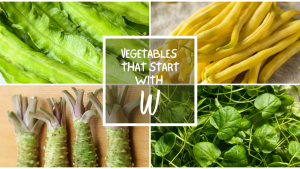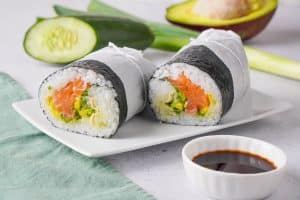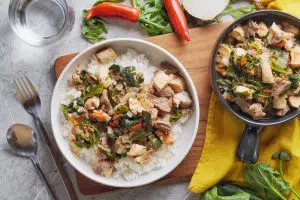All The Vegetables That Start With R
Important Note: When you buy through our links, we may earn a commission. As an Amazon Associate we earn from qualifying purchases. Content, pricing, offers and availability are subject to change at any time - more info.
As a source of essential vitamins and minerals, vegetables should be part of your menu every day. Due to the limited options you may have, eating vegetables on a daily basis may become dull. But no need to worry; here is a guide that will enable you to widen your vegetable options. The guide has categorized the vegetables according to the letters they begin with, so here is a list of all the vegetables that begin with R.
- Radish
- Ramp
- Radicchio
- Rocket
- Rhubarb
- Rutabaga
- Ramsons
- Red Cabbage
- Red Leaf Lettuce
- Ricebean
- The Final Letter
Radish

Radish is scientifically referred to as Raphanus raphanistrum and is an edible root vegetable belonging to the Brassicaceae family. Currently, radishes are cultivated in almost every corner of the world. However, they are believed to have originated from the Southeast Asia region before spreading to the rest of the world. Radishes are biennial or annual brassicaceous crops grown for their swollen tap roots, which can either be tapering, cylindrical or spherical. The roots of the radish plant tend to vary in color; they tend to range from pink, yellow, black, green to purple, but the inner flesh is always white. The color of the radish’s roots is often influenced by the anthocyanins, such as the purple radishes obtaining their color from the cyanidin, while the red radish’s color is obtained from pelargonidin.
Radishes are an annual, fast-growing, cool-season crop. The radish seeds tend to germinate almost three to four days after cultivation. To have the best radish yields, you should cultivate them in an area with sandy loam soils with a P.H. of about 6.5 to 7.0. But for the late-season crop, the preferable soil type is usually clayey loam. After harvesting, radishes can be stored at room temperature without losing their quality for about three days, but if you want them to last longer, you have to refrigerate them. Radishes tend to be categorized depending on their shapes, length, size or color. There are about six different radishes varieties: daikon, black radish, green radish, wild radish, red radish, and oilseed radish.
Radishes are very popular worldwide and are eaten raw as a salad vegetable. Radishes tend to possess a crispy texture and a sharp peppery, savory flavor that is brought about by the chemical compounds present in the plant, such as myrosinase, isothiocyanate and glucosinolate. There are various ways to eat radishes, and they include pickled, added to salad, as a bugger topping, braised with pork chops, roasted with garlic and olive oil or added to a veggie platter. Even though radishes are mainly grown for their roots, the entire plant is edible, with the leaves being a common delicacy. The leaves can be sauteed as a side dish or used in preparing soup, with the most common being potato soup. Also, the leaves can be blended with various fruits to make a very nutritious and refreshing smoothie or juice.
Radishes contain multiple nutritional contents that offer various health benefits to our bodies. Some of the nutritional content in radishes include vitamin C and B6, potassium, iron, calcium, folate, niacin, riboflavin, thiamine and manganese. The health benefits of these vitamins and minerals include enhanced liver function, reducing the risk of diabetes, improved cardiovascular functionality, body detoxification, improved blood flow and reduced blood pressure.
Radishes also offer other benefits, such as they can be a source of biofuel, especially the wild radish, pest deterrent due to their spicy taste, and improve soil fertility and soil compaction. Radishes are a very common delicacy; hence they can be found in almost every grocery store or market in the U.S.
Ramp
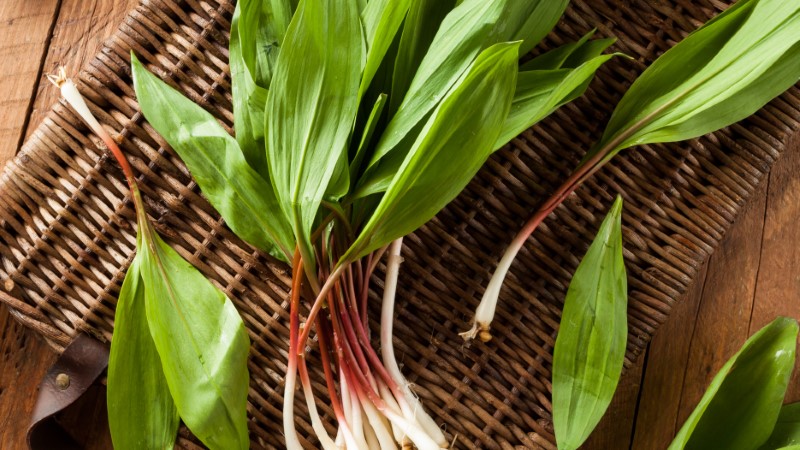
Ramp is a North American species of wild onion that is wildly spread across the eastern regions of the United States and Canada. Ramps have various names, such as ramsons, wild garlic, wood leek or wild leek, but scientifically they are referred to as Allium tricoccum. Ramps grow from a conical-ovoid bulb, usually about 2-6 centimeters long. The plants tend to produce a cluster of about 2 to 6 bulbs that produce flat, smooth, broad light green leaves that grow to about 20=30 centimeters long. There are two known varieties of ramps Allium tricoccum var. tricoccum and Allium tricoccum var. burdickii. The two species of ramps possess different physical attributes that help with differentiation, such as var. tricoccum is generally larger, and the leaf stalks and sheaths are usually red or purplish, while with var. burdickii, the leaf sheaths and stalks are less distinctive and are white.
Ramps can be eaten raw, though they have to be cooked to enjoy their flavor. The ramps’ flavor and aroma are said to be between that of an onion and garlic. There are various ways in which ramps can be prepared, such as roasting, grilling, pickling or sautéing, but the most common method is by sautéing the ramps in cooking oil or butter, which tends to soften their flavor. Ramps tend to be more flavorful than leeks and scallions but not as potent as garlic or onions. In central Appalachia, ramps are most commonly fried with potatoes in bacon fat or scrambled with eggs and served with bacon, pinto beans and cornbread.
Ramps possess various health benefits to humans, such as they are a source of nutrients such as vitamins and minerals. Ramps are a source of vitamin K1, which is essential for blood clotting and improving heart health. Vitamin C present aids the body in improving iron absorption, tissue repair, collagen production and boosting the immune system. Ramps also help reduce inflammation and the risk of certain cancers. Other health benefits include lowering blood sugar levels, fighting infections and promoting brain function. Ramps also possess antioxidants such as kaempferol; a polyphenol antioxidant thought to protect against heart disease and some types of cancer. The antioxidants also help fight oxidation which damages your cells while contributing to diabetes and heart disease.
Ramps are very popular in the U.S. and Canada, such that there are festivals that involve ramps as the center of attraction. An example is the city of Elkins, West Virginia, which hosts the “Ramps and Rails Festival” during the last weekend in April of each year. This festival features a cook-off and ramp-eating contests. The Cherokee people use ramps as medicine for croups and colds and also for treating worms in children. The juice obtained from the crushed bulbs is used to treat insect stings in some native American communities.
Radicchio
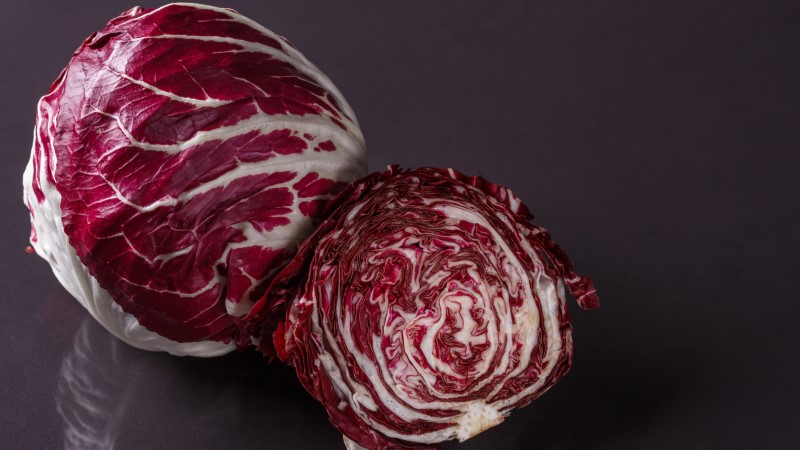
Radicchio is a perennial form of chicory and is scientifically known as Cichorium intybus var. foliosum. Radicchio is commonly used in Italian cuisine hence the name Italian chicory. Other names include red chicory or red endive. Radicchio is grown as a leaf vegetable. The radicchio leaves are predominantly red with white veins that form a head. Most people mistake radicchio for red cabbage or lettuce, but radicchio has a distinctive bitter and spicy taste.
Radicchio can be consumed either raw or cooked. Some of the most common ways of preparing radicchio are by grilling, sautéing or roasting. When cooked, the radicchio flavor becomes less bitter and more mellow. When buying radicchio, you should ensure that there is now browning on the leaves, and they should also still feel firm. Radicchio is a very versatile vegetable. Here are some recipes that you can use when serving radicchio; chop up the leaves and add them to a salad, grill it in wedges and serve it as a side dish, roast it with balsamic vinegar, use the leaves as a wrap for chicken or tuna salad, fry radicchio with olive oil, garlic and add salt for taste, or you can shred the radicchio and serve it as coleslaw.
Radicchio contains vitamins, antioxidants and minerals that are significant to your health. These nutritional contents include vitamins K, B6 and E, calcium, magnesium, manganese, iron, phosphorus, selenium, copper and zinc. The health benefits of these contents include reducing the risks of cancer, diabetes, heart diseases, osteoporosis and inflammation. Other benefits include improved cognitive, bone, digestive and heart health. As much as radicchio is safe to eat, there are some side effects, such as allergic reactions. Also, radicchio isn’t recommended for people with gallstones since radicchio happens to stimulate bile production.
Rocket

Rocket is an annual edible plant that belongs to the Brassicaceae family and is preferred for its leaves. Scientifically rocket is known as Eruca sativa. Rocket also has different names depending on your region. In Britain, South Africa, Ireland, New Zealand, and Australia, it is known as eruca. Other names include rucola, rucoli, rugula, roquet, garden rocket and colewort. Rocket is native to the Mediterranean region, especially Portugal, Morocco, Egypt, Syria, Turkey, Lebanon, and Israel.
The rocket’s leaves are edible with a peppery, bitter, and tart flavor. It is primarily used in the preparation of salads and hence regarded by most as a salad vegetable. In Slovenia, rocket is combined with boiled potatoes or used in soup. In Rome, rocket is used in straccetti, a dish of thin slices of beef with raw rocket and Parmesan cheese. In Turkey, the rocket is eaten raw as a side dish or salad with fish but is additionally served with a sauce of extra virgin olive oil and lemon juice. While in West Asia, Pakistan, and Northern India, rocket seeds are pressed to make taramira oil, used in pickling and as a salad or cooking oil after aging to remove acridity.
Rockets contain nutritional contents such as folate that helps support the production of DNA and other genetic material. Vitamin K is responsible for blood coagulation. Vitamin C helps support the tissue health, immune system and iron absorption from food. Vitamin A supports cell growth, immune function, night vision, and overall eye health. Minerals like potassium are vital for heart and nerve function, and calcium helps the blood clot normally. Also, rockets help maintain kidney, lung, and heart function.
Rhubarb

Rhubarb is scientifically known as Rheum hybridum and a member of the Polygonaceae family. The rhubarb plant is a perennial herbaceous plant growing from short, thick rhizomes. Rhubarb is known for its sour taste and thick reddish stalks. The stalks sometimes differ in color, and the color can range from pale green to pink. For quality rhubarb yields, they must be cultivated in regions that experience cold winters; hence rhubarb is mainly grown in Europe and North America, where it is used as a vegetable, but in Asia, rhubarb is mainly cultivated for its roots which possess medicinal value.
Rhubarb can be consumed raw or cooked, but due to its bitter taste, it is mainly preferred cooked and sweetened with sugar or used as an ingredient in the preparation of other dishes. With rhubarb, only the stalks are eaten and are mostly used in jams, sauces, sweet soups, pies, crumbles, cocktails, tarts and rhubarb wine. In the United Kingdom and North America, rhubarb is often referred to as the pie plant since it is the main ingredient in making sweet rhubarb pie.
Rhubarb contains various nutritious contents such as vitamin K1, C, proteins, calcium, potassium, folate, fiber, antioxidants and iron. The health benefits of rhubarb include lowering the body’s cholesterol levels and providing the body with antioxidants which help reduce inflammation and the risks of cancer, diabetes and heart-related diseases. Rhubarb is very common in all grocery stores across the United States.
Rutabaga
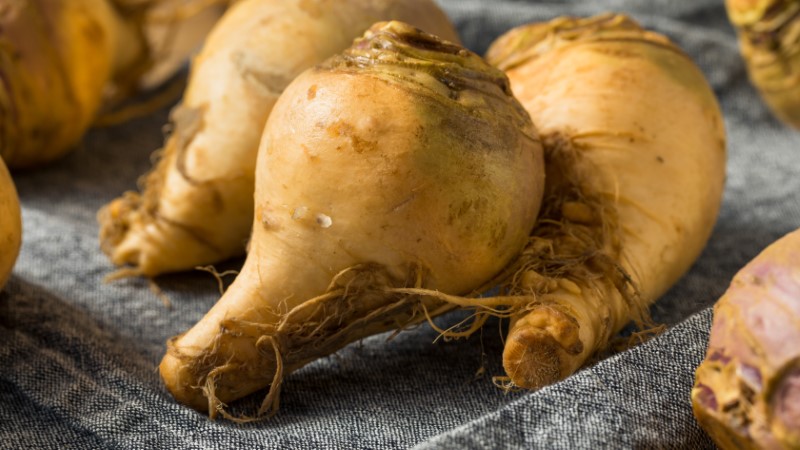
Rutabaga is a root vegetable that is scientifically referred to as Brassica napus. Other names referring to the rutabaga include neep in Scottish, rwden/rwdins in Welsh or Swedish turnip. The rutabaga is a hybrid between the turnip and cabbage. Rutabaga belongs to the same plant family as cruciferous vegetables like radish, cabbage, cauliflower, turnip, and broccoli. The rutabaga’s outsides are always brownish-yellow or purple, while the insides are either white or yellow.
Rutabagas are almost identical to turnips and are primarily used in Japanese, Scandinavian, Chinese, English, American, European and Indian cuisines. Rutabagas have a strong earthy and pungent smell, and they test a bit milder than turnips when eaten raw, but when cooked, the taste is usually savory, buttery and sweet. There are various ways that you can eat rutabagas. You can either eat them with sweet potato mash, as puree, boiled, as fries, roasted with gravy, in a vegetable casserole, as a salad or with parsnip soup.
Rutabagas are a rich source of vitamins C and E, minerals like magnesium, potassium, calcium and manganese, fiber and antioxidants. The presence of these nutritional content offers various health benefits to the body, such as prevention of certain cancers, help in weight loss, boosting both the nervous and immunity systems, prevention against cardiovascular diseases, regulation of blood pressure, collagen formation, protection of the body cells from free radicals and slowing down the process of aging. Rutabagas are very common in the United States and can be found in almost all grocery stores countrywide.
Ramsons
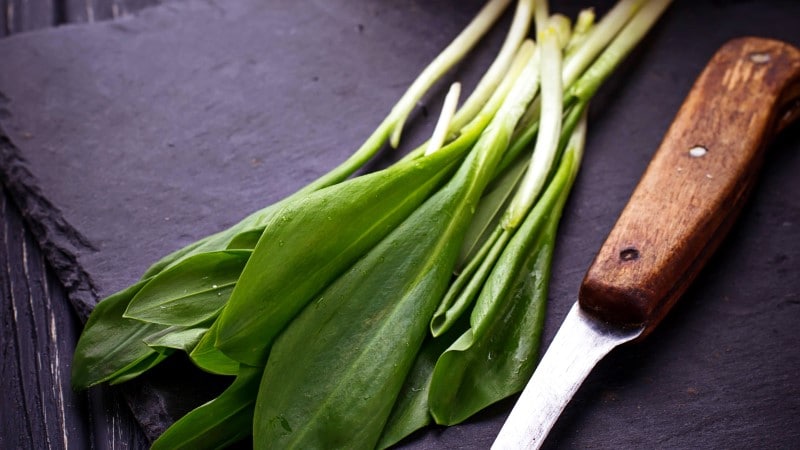
Ramson is a bulbous perennial flowering plant belonging to the Amaryllidaceae family. The scientific name of the ramson is Allium ursinum. Ramsons also have a variety of names depending on the region. These names are cowleekes, wild garlic, buckram, wood garlic, bearleek, Eurasian wild garlic, or bear’s garlic. Ramson is native to Asia and Europe, where it mainly grows in the woodland areas.
Ramsons are primarily cultivated for their edible leaves. The leaves can be eaten raw as salad, or they can be cooked. The most common way of preparing ramsons is by boiling them in soup or using it as an ingredient since they can also serve as a substitute for pesto instead of basil. The ramson leaves can also be used to make garlic butter. The bulb and flowers of the ramson plant are edible and are used in the preparation of herbed cheese, which is very common in Turkey.
The health benefits of ramsons include treating chronic cardiovascular diseases like heart attacks, strokes and high blood pressure. Ramsons also help treat stomach issues such as bloating, cramping, constipation and inflammation. Ramsons also contain antibacterial properties that help cleanse the stomach of any bacteria or microbes. Wild garlic is also perfect for your skin. Other benefits include reducing the aggravation of allergies and helping in the body n the process of detoxification. Ramsons are not that common in the United States, but you can find them in select grocery stores if you need them.
Red Cabbage
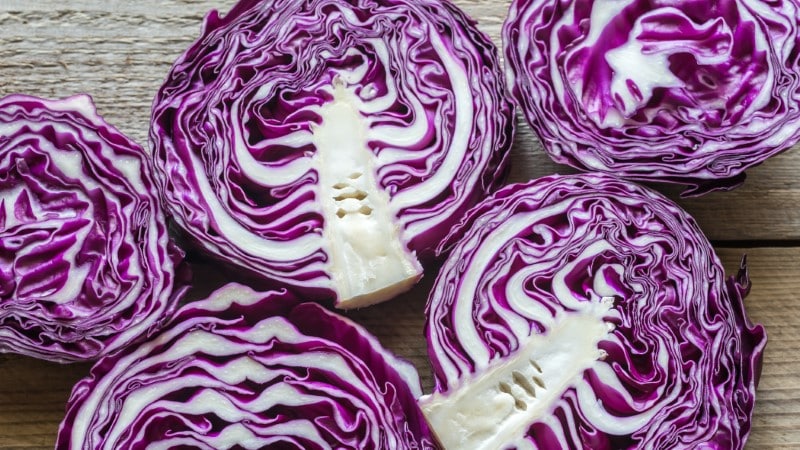
Red cabbage is the purple variety of cabbage hence the scientific name Brassica oleracea. After preparation, red cabbage is also known as blaukraut. The leaves of the red cabbage are predominantly dark purple or red; however, the color can change depending on the soil’s P.H. value. This is all caused by a pigment belonging to anthocyanins. When cultivated in acidic soils, the leaves appear to be more reddish. In neutral soils, the leaves are purple, while in alkaline soils, the leaves appear somewhat greenish-yellow. Red cabbages are heavily cultivated in Europe, China, the Americas and Africa.
Red cabbages can be consumed either raw or cooked. When consumed, raw red cabbages are used for coleslaw and salads. Red cabbages are very popular during the festive seasons, where they are used to accompany roast goose or Turkey. In some regions, red cabbage is mixed with apples to give it a sweet-sour taste. Other simple recipes you can use to prepare red cabbage include roasting it with bacon, fermenting the cabbage to make sauerkraut or kimchi, light steaming the cabbage and serve it as a side dish, adding it to soup and stews, or using it as a toco toping.
Red cabbages are rich in vitamins K, A, B6 and C, folate, calcium, magnesium, zinc, riboflavin and thiamin. These nutrients help reduce the risks caused by health conditions such as cancer, heart disease and osteoporosis. Other health benefits include improved bone and digestive health. Red cabbage also contains antioxidants that help the cells of the body fight against free radicals. Red cabbages are very popular in the United States, such that they can be found in almost all markets and grocery stores countrywide.
Red Leaf Lettuce

Red leaf lettuce is a variety of lettuce species with red leaves. Red lettuce has a variety of names, with each name originating from a different region where the red lettuce is cultivated. These names include red sails, lettuce, redina, benitto, or red sails, lettuce. Red leaf lettuce can be cooked though it is best when eaten raw as a salad. You can try eating it with tacos, sandwiches, egg rolls or spring rolls.
Red leaf lettuce contains numerous nutrients such as vitamin A and C, iron, zinc, fiber and calories. These nutrients help the body improve bone health, improve one’s vision, promote sleep and help in weight loss. Red leaf lettuce can be found in almost all grocery stores in the United States.
Ricebean
Ricebean is a warm-season annual vine legume with yellow flowers which is mainly cultivated for its small edible beans. Ricebean is mainly grown as dried pulse and is mainly cultivated in the southern regions of India, Nepal, China and Bangladesh. It is believed that ricebean originated from Indo-China. Most farmers prefer cultivating ricebeans since they can grow on a wide range of soils.
Ricebeans have to be cooked for them to be edible. There are various ways to prepare ricebeans, but first, you have to boil the beans to soften them. To reduce the time needed to boil the beans, you can soak them. The ricebean beans can also be ground into flour.
Ricebeans are a rich source of antioxidants, folate, potassium, vitamin B, proteins and magnesium. These nutrition contents of ricebeans have various health benefits, such as lowering the risk of cancer and lowering cholesterol levels. The presence of vitamin B in the beans lowers the risk of you getting cancer. Some other health benefits of ricebean include the prevention of iron deficiency and the promotion of brain health. Also, due to their low glycemic index, ricebeans help in the prevention of diabetes. Ricebean is mostly used for intercropping, especially by corn or maize farmers, due to its nitrogen-fixing properties.
The Final Letter
Vegetables are a must-have in your diet, so the list above will guide you through the various types of vegetables available and the healthy goodness we obtain from the vegetables.
